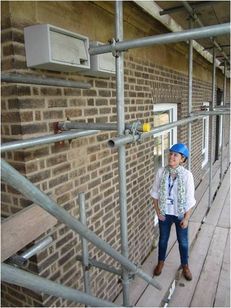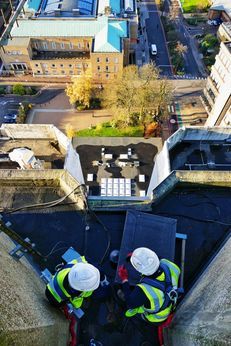University of Leicester Swift and Peregrine Nest Box Project
The cityscape that provides the backdrop for the University of Leicester is characterised by many various types of buildings both old and new with the main campus home to several notable examples of Brutalist and grade-listed architecture. It is in such locations that we face the greatest challenges to actively encourage and plan for biodiversity, but they can also allow for some of the most innovative solutions.
Determined to utilise the existing features that can be found nowhere else other than a city, two specialist bird conservation projects were instigated at the University to increase the nesting sites for migratory swifts and urban peregrines on Main Campus buildings. Ten boxes for swifts were installed on Astley Clarke overlooking the lawn and two much larger boxes have been situated on the Charles Wilson and Attenborough Tower for peregrines.
These species (the latter especially) are well known for taking advantage of the warmth of the city and have been recorded nesting and breeding successfully by the Leicestershire and Rutland Ornithological Society and the City Council. However, the modernisation of many buildings has resulted in a loss of nest sites, particularly swifts because of their use of gaps and cracks; this makes the addition of man-made boxes all the more important when they migrate here each year in April. Peregrines stay in the UK all year round but eggs are often sought by collectors, chicks take a longer time to develop and it is essential that they are not disrupted by larger animals or people.
These projects were a collaborative effort with the Leicester City Council and Ornithological Society and benefitted greatly from the expertise of Edward Mayer from the Swift Conservation. Mp3s with recordings of swift calls have been installed in the hope that it will encourage the boxes to be used and webcams have purchased ready for the first sign of activity. The next step will be to give academics and students the opportunity to study bird activity so that more informed decisions can be made in the future during construction and maintenance of the University estate.






 Except where otherwise stated, content on this site is
licensed under a Creative Commons Attribution 3.0 License.
Except where otherwise stated, content on this site is
licensed under a Creative Commons Attribution 3.0 License.
